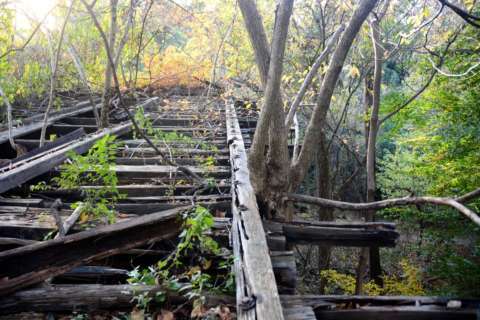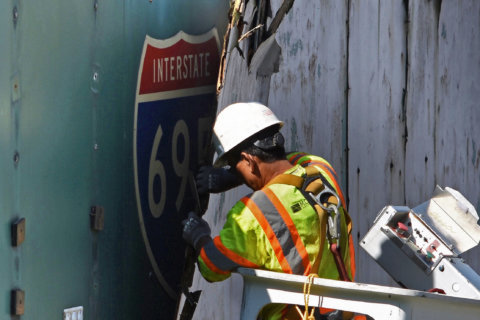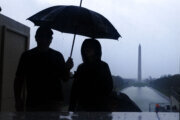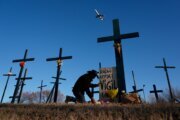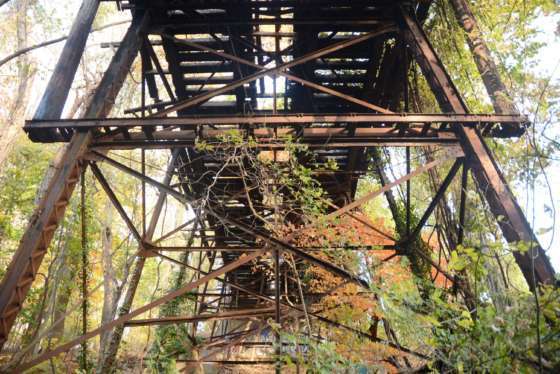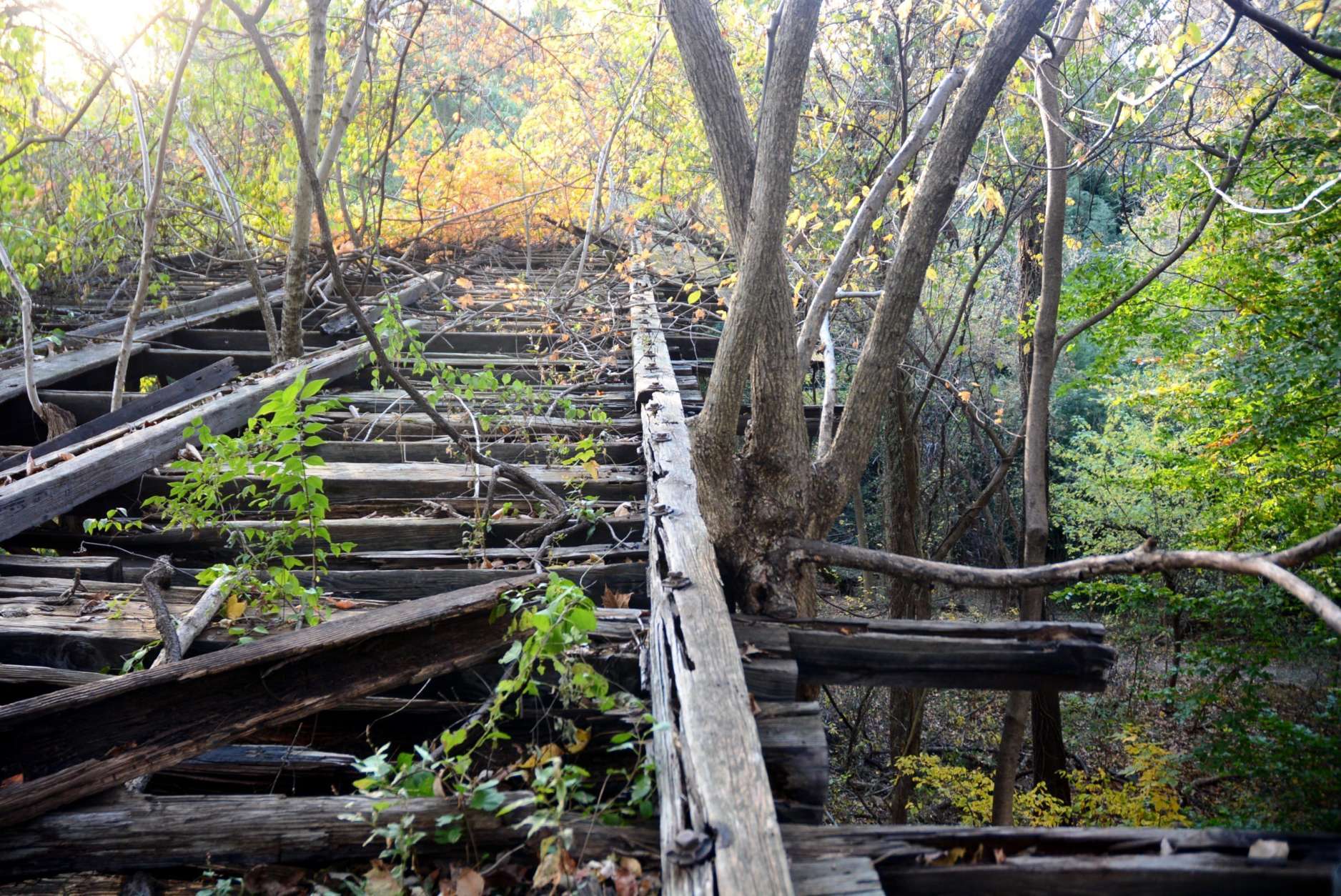
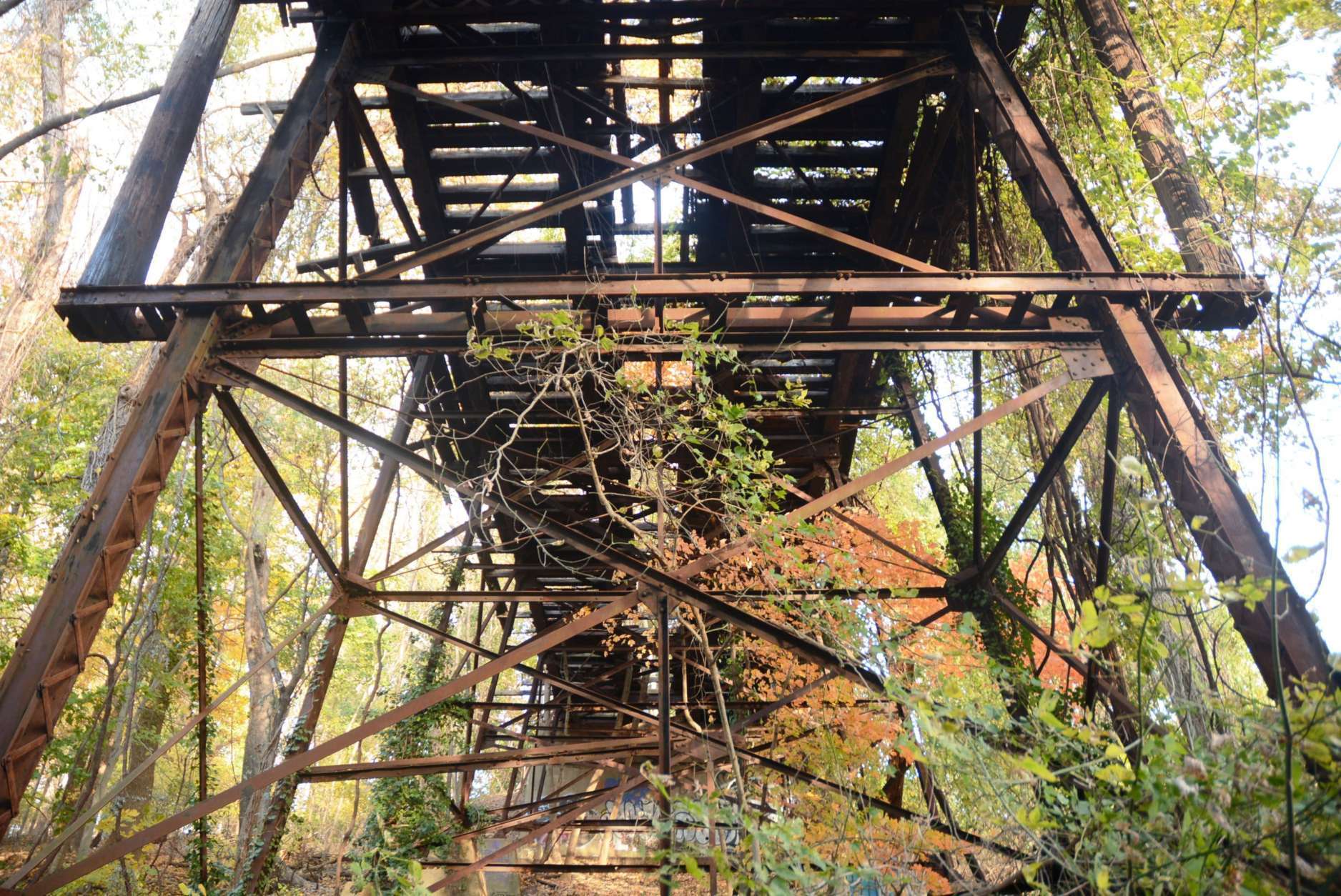
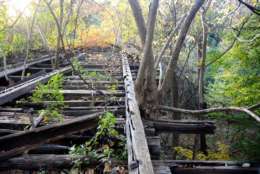
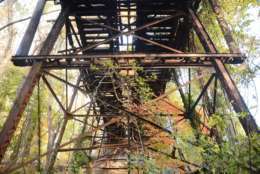
The future of the more than 120-year-old Foundry Branch Trolley Trestle, a streetcar bridge in Glover-Archbold Park in Northwest D.C. that has long been abandoned, remains uncertain.
It could be demolished, but some preservationists are pushing for its salvation, along with other community members who also want to preserve it for its practical value.
We’re at the Mayor’s Agent hearing to #SavetheTrestle from demolition. The historic Foundry Branch Trolley Trestle could be reused as a pedestrian and cycling path, but WMATA wants to demolish it before a complete reuse study can be completed by DDOT.
— DCPreservationLeague (@DCPresLeague) March 22, 2019
Metro has submitted a permit to tear down the trestle, claiming that the transit agency will face economic hardship if the permit is denied. Metro earlier had told WTOP that the bridge has to be torn down due to its deteriorated condition, and because of their main focus is keeping the transportation system safe for its passengers.
The Mayor’s Agent on Historic Preservation held a public hearing Friday regarding Metro’s permit to raze the streetcar bridge.
The DC Preservation League tweeted that discussion of Metro’s permit will continue until the District Department of Transportation completes its Palisades Trolley Trail and Foundry Trestle Feasibility Study in August.
Mayor’s Agent continuing raze permit case until DDOT trail survey is completed at end of summer. #SavetheTrestle
— DCPreservationLeague (@DCPresLeague) March 22, 2019
Brett Young, who lives in the Palisades neighborhood and was at the permit hearing, agrees with Friday’s decision by the Mayor’s Agent.
“This is a good ruling … because it allows DDOT to finish what they need to do without worrying about if it’s going to be demolished. Even if they ended up getting a permit, there’s still other steps that they need before they can demolish it. DDOT’s feasibility study is a key issue to the whole thing at this point.”
Young also said the streetcar bridge is historic and can have practical value as well.
“We could be reusing it for encouraging more cycling, more paths to walking, dog walking,” Young said.
He said preserving the bridge could also help D.C. meet some of its traffic safety objectives by providing another pathway for pedestrians and cyclists to commute from their homes to other points in D.C. and beyond.
“It’s a dedication to Vision Zero, a safer environment where the pedestrian and the cyclist are in a safe environment,” Young said. D.C.’s Vision Zero plan involves shrinking traffic fatalities and serious injuries to zero by the year 2024.

